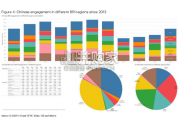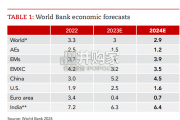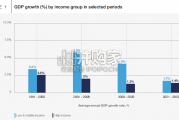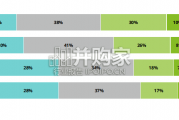China’s financing and investment spread across 61 BRI countries in 2023 (up...
2024-02-27 32 英文报告下载
One of the main controversies of globalization is its effect on labor markets in both developed and developing economies. Across advanced economies, the real median wage has grown slowly over the past two decades and manufacturing employment has been on the decline, while incomes of highly skilled workers and owners of capital have soared. There are of course many factors at work here, and not all are related to globalization, especially countries’ own domestic tax and transfer policies, but one additional factor has been big developing countries, especially China and Eastern European economies, opening up and joining the global economy.
A number of studies have concluded that, in particular, the impact of Chinese import competition on the U.S. labor market, especially after China joined the WTO, was a significant factor behind U.S. manufacturing employment dropping sharply after 2000. But these analyses have typically only provided a partial view of the overall impact on employment, by and large ignoring the reality of value chains. A full view requires that we account for the fact that the development of value chains results in churning across economies, as firms and countries specialize and create certain types of jobs while eliminating others. General equilibrium analyses of the so-called “China shock” that take account of GVCs find that, for the U.S., trade was not a main contributor to the loss of manufacturing jobs and has only minor aggregate employment effects. One important reason for this more nuanced effect is that while some industries contracted because of increased competition, others expanded thanks to the cost savings that GVC linkages provided, counterbalancing jobs lost
in contracting industries. This is consistent with economic theory, which suggests that trade should not have a large net effect on
employment.
That being said, the effects vary considerably across regions and individuals with different skill levels. Moving from the nationwide and sectoral level to regional and individual outcomes reveals substantial heterogeneity in how aggregate effects map out. For instance, when local labor markets within countries are not sufficiently diversified, trade can widen regional disparities. Regions specialized in import-competing and upstream industries can fall behind, while areas with industries that export or benefit from cost savings due to cheaper imported inputs pull away.

标签: 英文报告下载
相关文章

China’s financing and investment spread across 61 BRI countries in 2023 (up...
2024-02-27 32 英文报告下载

Though the risk of AI leading to catastrophe or human extinction had...
2024-02-26 53 英文报告下载

Focusing on the prospects for 2024, global growth is likely to come i...
2024-02-21 99 英文报告下载

Economic activity declined slightly on average, employment was roughly flat...
2024-02-07 68 英文报告下载

Economic growth can be defned as an increase in the quantity or quali...
2024-02-06 82 英文报告下载

In this initial quarterly survey, 41% of leaders reported their organizatio...
2024-02-05 66 英文报告下载
最新留言